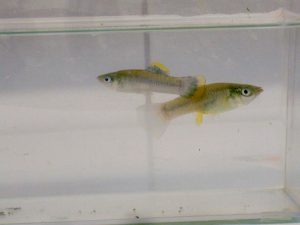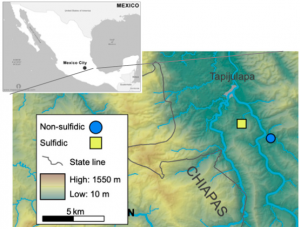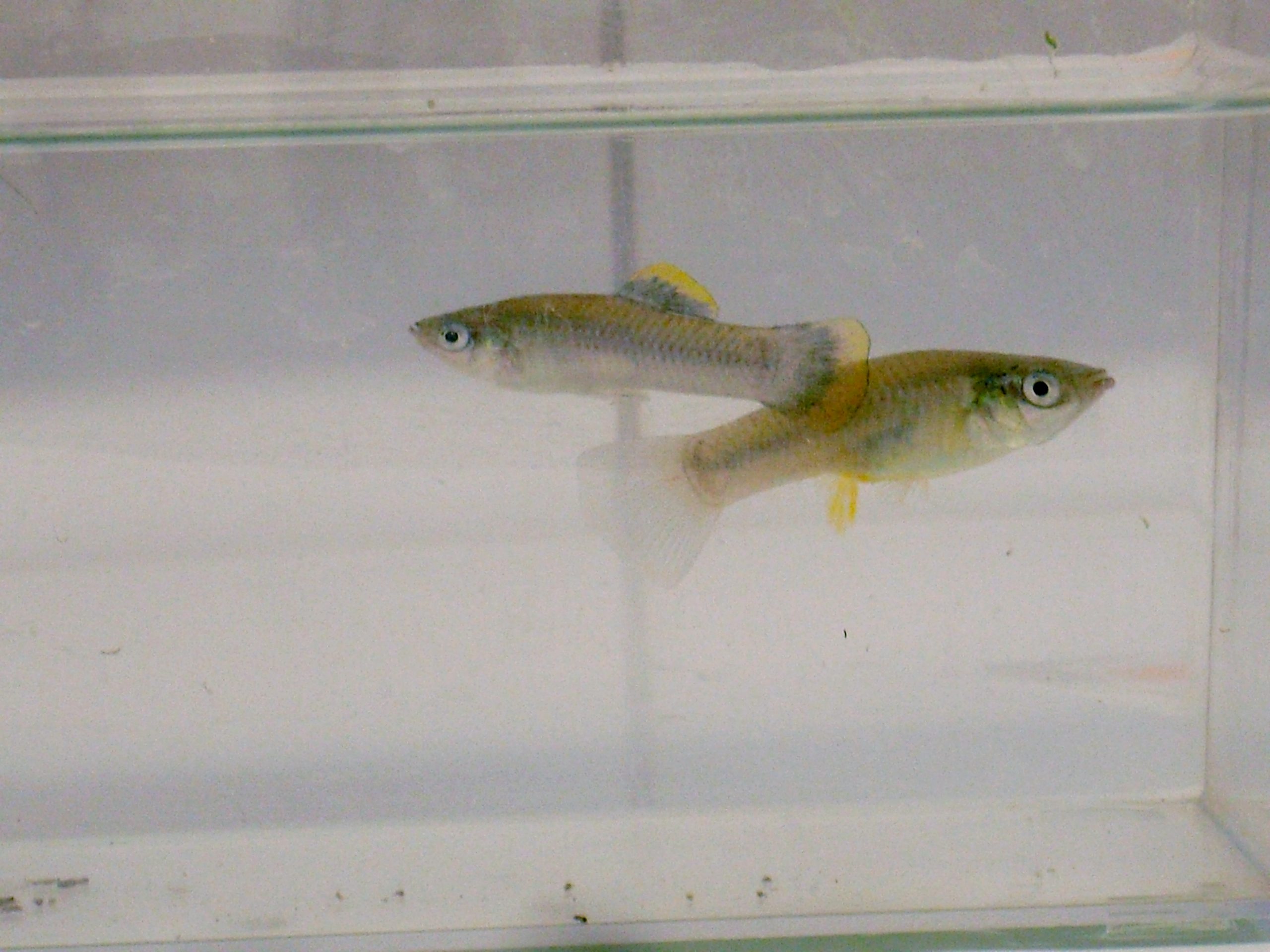References: Kelley, Joanna L.; Tobler, Michael; Beck, Daniel; Sadler-Riggleman, Ingrid; Quackenbush, Corey R.; Rodriguez, Lenin Arias; Skinner, Michael K. (2021). Epigenetic inheritance of DNA methylation changes in fish living in hydrogen sulfide-rich springs. Proc. Nat. Acad. Sci. U.S.A. 118, e2014929118.
DOI: https://doi.org/10.1073/pnas.2014929118
Reading Time: 5 minutes
It’s a running joke that people from Minnesota say 40°F feels warm and people from California say 50°F feels cold. Why is that so? Lots of previous research have asked a similar question, and the answer usually relates to adaption. Just like other animals, humans have to adapt to their environments. So, people living in Minnesota have adapted to colder weather and people in California have adapted to warmer weather. This is just one environmental factor of many impacting how animals live. Let us consider an extreme example: a salmon living in a stream near a large agricultural farm. This fish would have to deal with a plethora of chemicals entering the waters, including fertilizers and pesticides. These chemicals (and others like them) significantly change the chemistry of the water, causing possibly harmful impacts on the salmon in question. Hypothetically when this farm drains these chemicals into the water, how do animals respond to these environmental changes? How can they make sure their offspring will survive these conditions too?

A multi-national team of scientists from Washington State University, Kansas State University, and the Universidad Juárez Autónoma de Tabasco investigated how one species of fish survives its own harsh environmental conditions. The group compared two populations of the fish species Poecilia mexicana in Southern Mexico living in conditions with high or low hydrogen sulfide concentrations in the water. Hydrogen sulfide is a chemical existent in most animals, but it can be toxic at high amounts as it can interrupt your ability to make energy through the electron transport chain in the mitochondria. While this is true, some previous research has shown us that similar types of fish can live in high hydrogen sulfide conditions just fine. Today, the team examined how the population of fish living in high (usually toxic) hydrogen sulfide concentrations specifically survive.
What did they find?

For some context, DNA, the code of genes that is passed down from parent to offspring, can be methylated. This process influences when and how that specific part of the DNA, or gene, will be utilized. The team discovered that DNA in red blood cells of P. mexicana fish (of both sexes) was methylated more often for fish living in high hydrogen sulfide conditions. More specifically, methylation occurred more often in 50% of areas in the DNA where methylation could occur (otherwise known as DNA Methylation Regions or DMR’s). Furthermore, parents and offspring had 80% of their DMR’s overlapping, so DNA methylation was inherited to help the next generation survive! Some of the genes highly methylated were ones relating to signaling, DNA transcription, cytoskeleton maintenance, metabolism, and receptors.
For a side-by-side comparison, the team brought fish into their laboratory to perform similar tests. The group kept one population in a high-hydrogen sulfide environment and one in a low-hydrogen sulfide environment. From the fish, the scientists discovered that there was only a 20% overlap in the DMR’s, meaning that there were large differences in fish DNA methylation when raised in the wild versus a lab. So, there are still a lot of complexities that control how these fish respond to their environment.
How did they do it?
The team performed all of these experiments themselves by raising fish in both a natural and laboratory setting. DNA was then collected from red blood cells, which were isolated from the blood of the fish, and analyzed. The group both checked the sequence of the DNA of what they collected as well as where on the DNA did methylation occur.
Why does it matter?
This investigation tells us a lot about the physiological behavior of fish living in harsh conditions, especially as aquatic environments become less hospitable due to environmental factors like climate change. Furthermore, this observation of inheritance of DNA methylation exhibits interesting possibilities about how organisms survive. With this knowledge, we can discern how animals can respond to their changing climate and keep surviving.
Hey! I’m a PhD student at the University of California, Davis studying biophysics. I previously studied organic chemistry (B.S.) at the College of William and Mary. Currently, I investigate the physical responses of lipid membranes to their environmental stimuli and explore the mechanistic potential of the protein reflectin, from D. opalescens, in soft matter systems. Generally, I am interested in how biological systems respond to physical stressors across all size scales, no matter how big or small! I am driven to pursue a career in science communication and outreach, especially in translating research findings into actionable, grassroots reform. Outside of school, I surf the Norcal coastline, play ultimate frisbee, and read.

